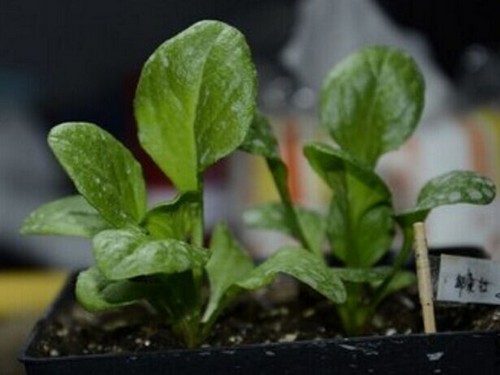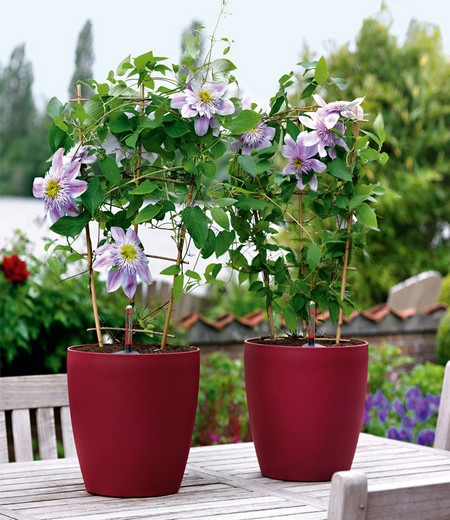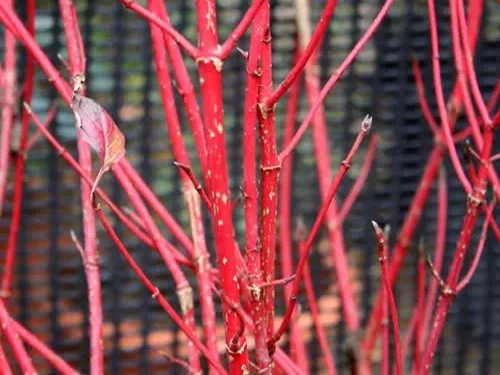Planting methods and matters needing attention of potted daisies
It is spring, and many people are thinking about whether they should plant some flowers and plants to decorate their rooms. The editor received a message from an editor saying that he liked an old Korean movie Daisy very much and wanted to try it. He asked me how to grow it. Today, I would like to give you a brief introduction to the tips for growing daisies.

Daisies have cold-resistant ecological habits and like sunny and cool climates. Not resistant to shade, high temperature and severe frost. It is easy to die if it blossoms poorly under hot conditions.
I. planting methods
The main results are as follows: 1. The stage of raising seedlings in acupoint tray.
The stage of radicle germination begins from the radicle piercing the seed coat, the young root touches the soil, and the cotyledons grow. The temperature should be kept at 18 ℃. Seed germination has good light property, so there is no need to cover the soil when sowing, but it is necessary to keep the cultivation medium moist and do not dry the medium at this stage. At this stage, the PH value is maintained between 5.5 and 6.2, and the relative humidity is 100%. Avoid direct sunlight and shade the seeds after sowing.
2. Cotyledon emergence and growth stage
The second stage is from cotyledons to true leaves. The temperature remains at 18 ℃. Properly reduce the humidity of the cultivation medium, but still not too dry, the humidity is about 70% to 80%, can make the root system into the medium to absorb nutrients for the extension of cotyledons. The first and second stages will take 14-21 days.
3. True leaf growth and development stage
From the beginning of the growth of true leaves, 80% of the seedlings can be sold for the third stage. The temperature dropped to about 15 ℃. The air humidity also needs to be gradually reduced, and the substrate can have a dry-through process between the two watering, thus forming a dry-wet cycle, which is conducive to promoting root development.
4. Seedling refining stage
The root system is intact, and the seedlings can basically be sold and become hardy by refining seedlings, which lasts for about 7 days. The temperature, humidity and fertilization concentration are basically the same as those in the third stage. Attention should be paid to transplanting into the pot in time. The third and fourth stages will take 7-14 days.
II. Cultivation and management
1. Soil
The substrate uses a loose, well drained and breathable cultivation substrate with a clay content of 15% Mel 30%, and about 15% organic fertilizer (such as compost) can be added. 1 kg of fully balanced fertilizer and 2 kg of slow-release fertilizer are applied per cubic meter of substrate.
2. Transplant into the pot
After refining the seedlings can be transplanted, you can use a 12 cm diameter nutrition bowl or flowerpot to transplant on the pot. Pour the root water thoroughly after putting on the basin. For potted products, transplanting in early October is better than transplanting at the end of October, because if transplanted in early October, the roots of the plant can grow firmly in the container before the frost.
3. Watering
Water should be watered once after potting, and the matrix can be slightly dried and fully watered between two times of watering, following the principle of dry and wet, which is beneficial to the growth and development of roots. Care should be taken to keep the matrix moist, but not saturated. The water should be controlled when budding to prevent the flower stem from being too long.
4. Temperature
The suitable temperature for fertility is 10 ℃-12 ℃. It needs to be covered when cultivated outdoors. In order to obtain good plant quality, daisies should be cultivated under cold conditions as far as possible, but frost should be avoided and plants should be prevented from freezing. Daisies can survive the winter safely when they are more than 5 ℃. When the temperature was lower than 6 ℃, the growth was relatively slow and delayed the formation of flower buds, while when the temperature was higher than 12 ℃, the leaves increased, the flower stems were thin and weak, the number of flowering decreased and the growth potential decreased. Attention should be paid to timely ventilation when the outdoor temperature is getting warmer.
Note:
The main results are as follows: 1. Make the plant grow in a cool cultivation environment as far as possible, so as to make the plant compact.
2. Botrytis cinerea can be easily caused by high relative humidity and too humid leaves in winter. When cultivating, you can choose a slightly humid environment, but not too wet.
3. Daisies are clustered with basal leaves, do not strengthen ventilation, and the base is easy to rot, thus infecting bacteria.
Planting considerations:
[daisy sowing stage]
Special attention should be paid to the control of lighting, even in summer.
When sowing daisies, there is no need to cover the soil, but the light should not be too strong, and a thin layer of vermiculite can be covered with vermiculite; the germination temperature should be kept at 18 ℃; the humidity of the substrate should be kept between 80% and 90%, and the relative humidity of the air should be 100%; the pH value should be between 5.5 and 6.2, during which no fertilization is needed.
In July and August, the greenhouse environment is mostly in a state of high temperature and humidity, so it is necessary to use shade nets, fans, wet curtains and other facilities to ventilate and cool down.
[true leaf stage of the plant]
The air humidity should be reduced to prevent the matrix from getting too wet, and the substrate should be allowed to dry out during the watering interval. Seedling refinement can be carried out when the seedling has 2 to 3 pairs of true leaves and the root system is developed.
[seedling refining stage]
Moisture control is particularly important, otherwise it is easy to grow seedlings. In order to avoid overgrowth, we must first ensure adequate light, in the premise of not more than 50,000 lux, the stronger the better, to ensure that not less than 10,000 lux. At the same time, it is necessary to strengthen ventilation, control temperature and humidity, and use growth regulators to inhibit overgrowth.
[transplant into the basin]
Most of the pots use 12 cm diameter nutrition bowls or flowerpots, with loose matrix, good drainage and air permeability, iron chelates and micronutrient elements, clay content between 15% and 30%, pH value from 5.5 to 6.2, EC value from 0.5 to 0.75. After the daisy is on the pot, the light should be more sufficient, ensuring at least 50 to 100000 lux in winter. In the process of producing finished flowers, topdressing can be done once a week.
Seedling bud growth of daisy
[pay attention to pest control]
Daisies are easy to infect germs, so close planting should be avoided and the environment should be ventilated. When aphids and other pests occur, infected plants or diseased leaves should be removed in time.
Time: 2019-05-25 Click:
- Prev

Planting method of Clematis (potted technique)
Clematis clematis branches and leaves are sparse, some flowers are large and colorful, and some florets gather into large inflorescences, which is interesting and unique, which is an indispensable good material in climbing greening. Can be planted in the wall, in front of the window, or attached to the trees, shrubs, planted between rockery and rocks. Cling to a style, gate, fence
- Next

Key points of planting techniques of Redwood
Redwood has bright red autumn leaves, white fruits and coral-like branches after falling leaves. It is not only a rare ornamental stem plant and ideal winter landscape tree species, but also a good cut flower material. Most of the gardens are planted on the lawn or planted alternately with evergreen trees, resulting in the effect of red and green, which also brings more surprises to the depressed winter landscape.
Related
- Fuxing push coffee new agricultural production and marketing class: lack of small-scale processing plants
- Jujube rice field leisure farm deep ploughing Yilan for five years to create a space for organic food and play
- Nongyu Farm-A trial of organic papaya for brave women with advanced technology
- Four points for attention in the prevention and control of diseases and insect pests of edible fungi
- How to add nutrient solution to Edible Fungi
- Is there any good way to control edible fungus mites?
- Open Inoculation Technology of Edible Fungi
- Is there any clever way to use fertilizer for edible fungus in winter?
- What agents are used to kill the pathogens of edible fungi in the mushroom shed?
- Rapid drying of Edible Fungi

